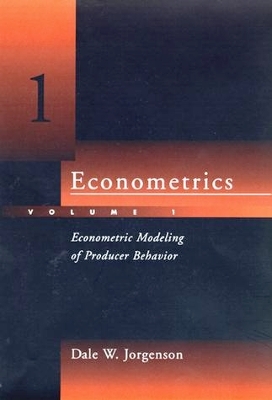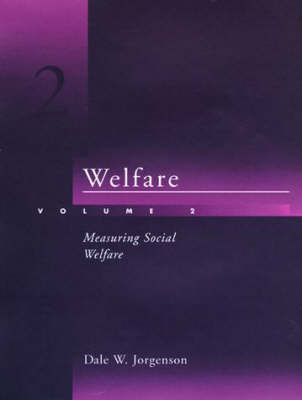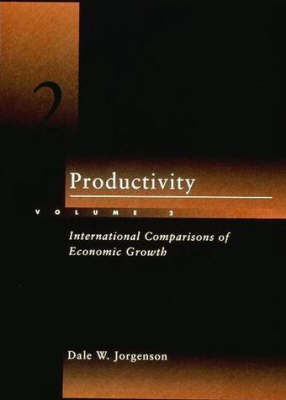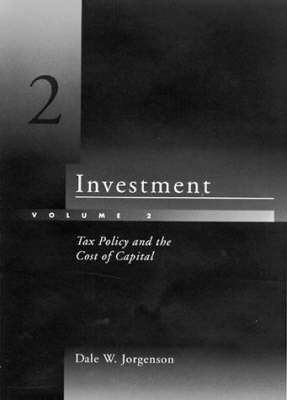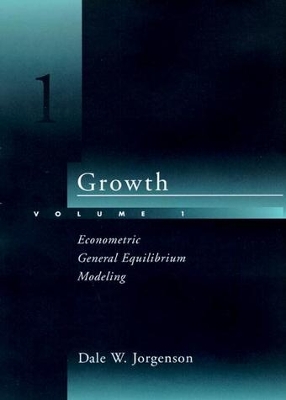The MIT Press
6 total works
New methodology for econometricians, based on the dual formulation of the theory of production in terms of prices.
The objectives of econometric modeling of producer behavior are to determine the nature of substitution among inputs and outputs and of differences in technology, as well as the role of economies of scale in production. Recent advances in methodology, based on the dual formulation of the theory of production in terms of prices, have enabled econometricians to achieve these objectives more effectively. This volume summarizes the economic theory, the econometric methodology, and the empirical findings resulting from the new approach.
This volume presents an approach to the evaluation of economic policies through the econometric modeling of aggregate consumer behavior. While the preferences of individual consumers are revealed by their market choices, these preferences can be recovered only by econometric methods, not through the index numbers used in the official statistics. The richer and more robust methodology presented in this volume provides a fruitful point of departure for future policy evaluations.
The econometric approach replaces ordinal measures of individual welfare that cannot be compared among individuals with cardinal measures that can. These are combined into an indicator of social welfare that reflects principles of horizontal and vertical equity. This approach unifies the measurement of poverty, inequality, and cost and standard of living. It extends the scope of normative economics to a broader range of issues in the evaluation of economic and social policies.
These two volumes present empirical studies that have permanently altered professional debates over investment and productivity as sources of postwar economic growth in industrialized countries. The distinctive feature of investment is that returns can be internalized by the investor. The most straightforward application of this idea is to investments that create property rights, but these volumes broaden the meaning of capital formation to include investments in education and training.
International Comparisons of Economic Growth focuses on comparisons among industrialized countries. Although Germany and Japan are often portrayed as economic adversaries of the U.S., postwar experiences in all three countries support policies that give high priority to stimulating and rewarding capital formation. In the Asian model of growth exemplified by Japan investments in tangible assets and human capital are especially critical during periods of rapid growth.
These studies of the cost of capital will inspire and guide policy-makers who share the goal of making the allocation of capital in a market economy more efficient.
Volume 2 is devoted to the cost of capital approach to tax policy. This approach has supplied an important intellectual impetus for reforms of capital income taxation in the United States and around the world. Widespread applications of the cost of capital and the closely related concept of the marginal effective tax rate are due to the fact that these concepts facilitate the representation of economically relevant features of complex tax statutes in a highly succinct form.
Volume 1: Econometric General Equilibrium Modeling presents an econometric approach to general equilibrium modeling of the impact of economic policies. Earlier approaches were based on the "calibration" of general equilibrium models to a single data point. The obvious disadvantage of calibration is that it requires highly restrictive assumptions about technology and preferences, such as fixed input-output coefficients. These assumptions are contradicted by the massive evidence of energy conservation in response to higher world energy prices, beginning in 1973. The econometric approach to general equilibrium modeling successfully freed economic policy analysis from the straitjacket imposed by calibration.
As a consequence of changes in energy prices and new environmental policies, a wealth of historical experience has accumulated over the past two decades. Interpreted within the framework of the neoclassical theory of economic growth, this experience provides essential guidelines for future policy formation. Volume 2: Energy, the Environment, and Economic Growth presents a new econometric general equilibrium model of the United States that captures the dynamic mechanisms underlying growth trends and responses to energy and environmental policies. Jorgenson uses the model to analyze the impacts of environmental regulations on US economic growth and tax policies for controlling U.S. emissions of carbon dioxide.
Double Dividend
by Dale W. Jorgenson, Richard J. Goettle, Mun S Ho, and Peter J. Wilcoxen
The authors simulate the impact of environmental taxes on the U.S. economy using their Intertemporal General Equilibrium Model (IGEM). This highly innovative model incorporates expectations about future prices and policies. The model is estimated econometrically from an extensive 50-year dataset to incorporate the heterogeneity of producers and consumers. This approach generates confidence intervals for the outcomes of changes in economic policies, a new feature for models used in analyzing energy and environmental policies. These outcomes include the welfare impacts on individual households, distinguished by demographic characteristics, and for society as a whole, decomposed between efficiency and equity.
